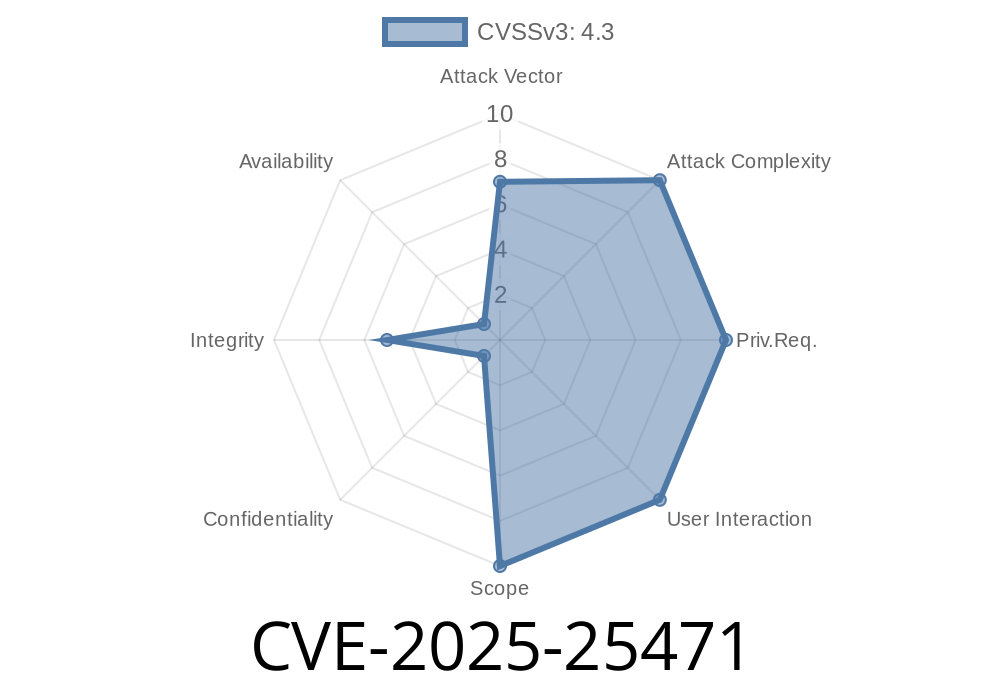FFmpeg is a widely used open-source project to handle multimedia files, including recording, converting, streaming, and playing various formats. In recent years, the project has attracted significant attention from both researchers and attackers due to its ubiquity and the vulnerabilities that have been discovered over time. This article discusses the details of vulnerability CVE-2025-25471, a NULL pointer dereference vulnerability in FFmpeg found in versions before commit fd1772.
Vulnerability Details (CVE-2025-25471)
CVE-2025-25471 is a NULL pointer dereference vulnerability that can result in a crash when handling malicious .mov files. This vulnerability is present in FFmpeg's git master branch before commit fd1772 and affects the libavformat/mov.c component. When parsing and processing a specially crafted .mov file, the vulnerability can cause a crash, leading to a denial of service situation, potential data loss, or even remote code execution in some cases.
Original References:
1. FFmpeg Git Commit - fd1772
2. FFmpeg Official Website
3. libavformat/mov.c Source Code
Code Snippet & Explanation
The vulnerability lies in the libavformat/mov.c component of FFmpeg while handling .mov files. Let's examine the vulnerable code snippet:
else if (atom.size == sizeof(MOVAtom) && atom.type == MKTAG('r', 'm', 'a', 'p')) {
int j;
for (j = ; j < c->channel_maps_count; j++)
if (c->channel_maps[j].id == sc->index)
st->codecpar->channel_layout = c->channel_maps[j].channel_layout;
}
In the code above, FFmpeg processes a 'rmap' atom from the .mov file. If the atom size is sizeof(MOVAtom), the code enters the for loop and checks if channel_maps from the context c has a matching id with the stream component sc->index. If a match is found, it sets the channel_layout of the associated audio stream. However, there is no NULL pointer check for c->channel_maps, leading to a NULL pointer dereference when the malicious .mov file has an invalid or missing channel_maps array.
Exploit Scenario
An attacker could exploit this vulnerability by crafting a malicious .mov file with a 'rmap' atom that triggers the vulnerability, then distributing the file or hosting it on a malicious server.
Once a user attempts to process or play the malicious .mov file using an affected version of FFmpeg, the application crashes due to the NULL pointer dereference. This could lead to a denial of service situation, potential data loss, or even remote code execution in less secure environments, such as older versions of operating systems or outdated browser plugins.
Mitigation
To protect against CVE-2025-25471, users must ensure that their FFmpeg installation is up-to-date with the latest security patches and bug fixes. As mentioned previously, the vulnerability was fixed in git commit fd1772; hence, updating to the git master branch after that commit will eliminate the vulnerability.
In addition, users should exercise caution when handling .mov files from untrusted sources and only process files from reputable sources, using up-to-date applications to minimize the risk of exploitation.
Conclusion
CVE-2025-25471 demonstrates the importance of following best practices in multimedia software development, including proper input validation and error handling, to ensure the security and reliability of the software. Ensuring your FFmpeg installation is updated with the latest patches will help protect against this specific vulnerability, and following general security best practices will minimize the risk of other potential threats.
Timeline
Published on: 02/18/2025 23:15:10 UTC
Last modified on: 02/20/2025 21:15:25 UTC
